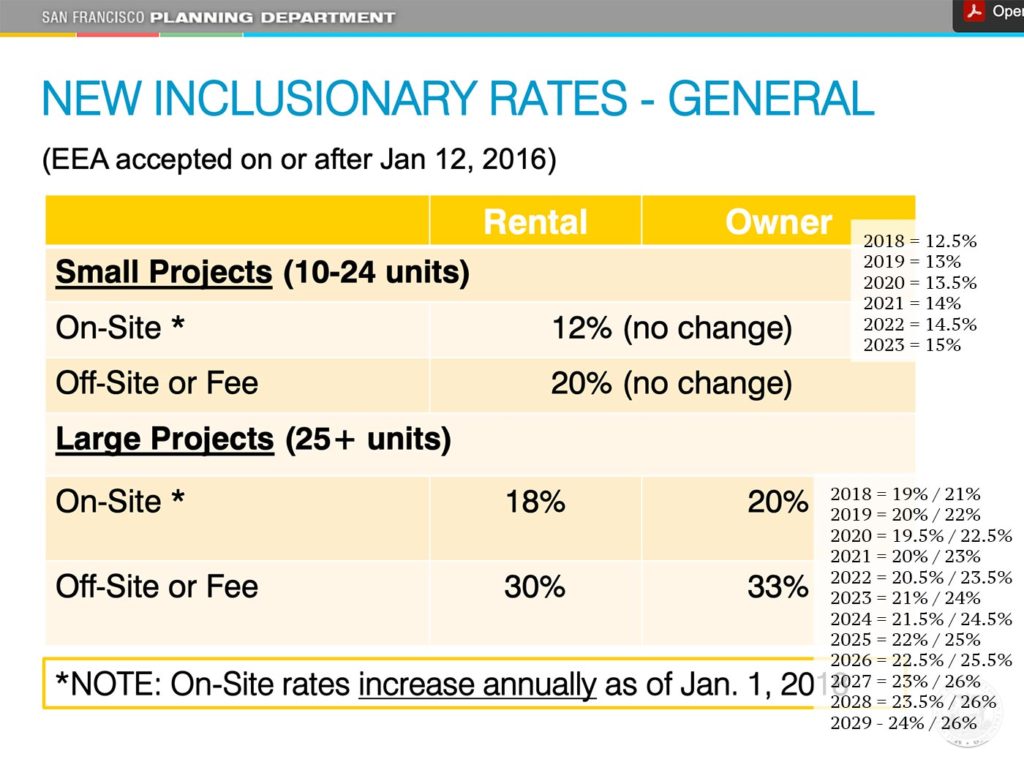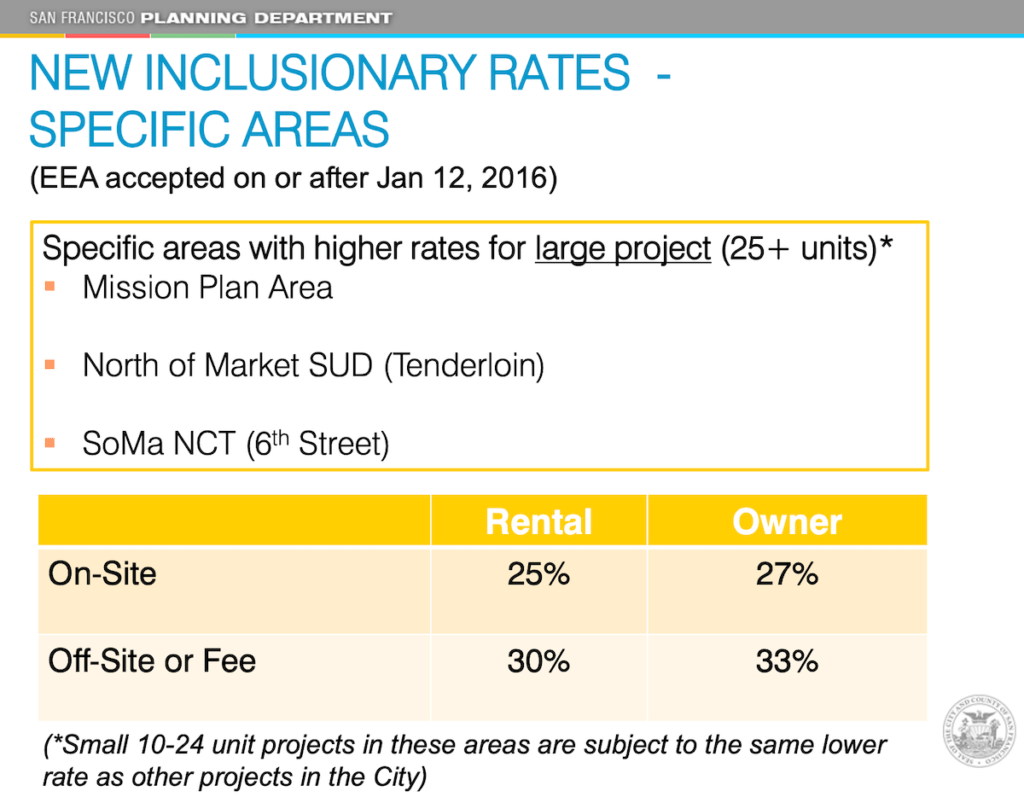How Much Inclusionary Housing Does San Francisco Require?
I made a quick instagram post this afternoon to explain how the state law AB2345 increased the number of homes being built in the development at 2588 Mission Street, right next door to Vida with a mailing address of 45 Bartlett. AB2345 is the state law that was authored by Assembly Members Chiu (SF) and Gonzalez (somewhere else) to give developers a density and de-regulation bonus for increasing the amount of affordable housing in a project and increasing the percentage of BMR homes at the low end of the AMI (area median income) range.
View this post on Instagram
To figure out how much the AB2345 density and de-regulation bonus impacted the developer’s options at 2588 Mission Street requires knowing what the city would have otherwise required. Yes, there is a state inclusionary housing/below market rate requirement. Localities can also impose their own, and yes, San Francisco does. The SF inclusionary housing percentages (how much of an entire project must be deed-restricted into the inclusionary housing program) were last adjusted by voters in 2017. And yes, it’s complicated.
Voters approved an increase in 2017 as well as annual increases until 2027 for owner-occupied new developments and until 2029 for rental buildings. I’ve amended this planning department slide to show the rates over time. For 2021, new developments that will be sold as condos have to have a minimum of 23% inclusionary housing. Unless…
…Unless the building is in a specific plan area, in which case the inclusionary rates for small buildings remains un-changed but the rates are higher for large buildings (25+ homes per city rules). In the Mission Plan Area, North of Market Special Use District (Tenderloin), and South of Market (SoMa) Neighborhood Commerical Transit District owner occupied new construction projects must have a minimum of 27% on-site below market rate homes.
So how many inclusionary homes will a building have? It all depends on the year it was built and the area it’s in.


